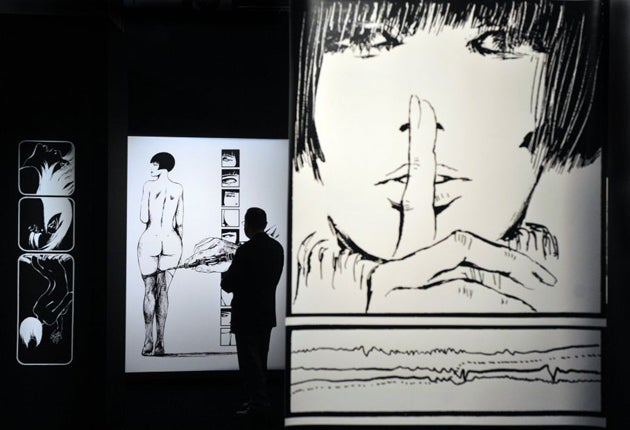Bardot, as you've never seen her before

Your support helps us to tell the story
From reproductive rights to climate change to Big Tech, The Independent is on the ground when the story is developing. Whether it's investigating the financials of Elon Musk's pro-Trump PAC or producing our latest documentary, 'The A Word', which shines a light on the American women fighting for reproductive rights, we know how important it is to parse out the facts from the messaging.
At such a critical moment in US history, we need reporters on the ground. Your donation allows us to keep sending journalists to speak to both sides of the story.
The Independent is trusted by Americans across the entire political spectrum. And unlike many other quality news outlets, we choose not to lock Americans out of our reporting and analysis with paywalls. We believe quality journalism should be available to everyone, paid for by those who can afford it.
Your support makes all the difference.A nude, cavorting Brigitte Bardot and Louise Brooks in bondage gear are among the bombshells on show in a new provocative exhibition of 1960s comic-strip art.
Sexties, which opened yesterday at the Centre for Fine Arts in Brussels, is a no-holds-barred riot of seduction and sex splashed across giant, colourful graphics. The lavish displays and high-speed cartoons of busty belles astride motorbikes shows the radical leap that the "ninth art form" made during the decade of the Pill, rock 'n' roll and Jimi Hendrix.
"Comic strips had been considered a minor art form but they came of age in the Sixties," said curator Pierre Sterckx. "They became erotic and for the first time targeted adults living through the sexual revolution of their day."
Frenchman Jean-Claude Forest unleashed the first shockwave in 1962 by creating Barbarella, a heroine inspired by Brigitte Bardot. The huge scandal and success of this first-ever "adult strip", with Barbarella as the embodiment of the modern, emancipated woman, later inspired Roger Vadim's cult movie starring Jane Fonda.
"People don't realise the huge impact that this art form had," says Sterckx, pointing to a Technicolor mural of Pravda, a flame-haired action-heroine based on the French chanteuse Françoise Hardy. "It looks like Pop Art but some of these cartoons came before the works of artists like Andy Warhol," he added. Pravda's creator, Guy Peellaert, later went on to design posters for films such as Taxi Driver and album covers for the Rolling Stones.
But there are also more unnerving images among the Pop Art exuberance. Guido Crepax, an Italian known for his fine-lined black and white graphics, often blurred the boundary between eroticism and sado-masochism. His Valentina, inspired by actress Louise Brooks, is often shown as the willing sex slave in bondage scenarios.
"It's true that Crepax crosses a line, but even his women are strong characters who are in control of the scenario," the exhibition curator explained. "And people who feel offended by these images are perhaps still trapped in their own gender stereotypes."
Join our commenting forum
Join thought-provoking conversations, follow other Independent readers and see their replies
Comments